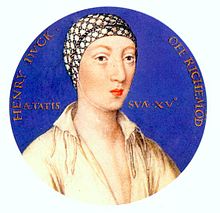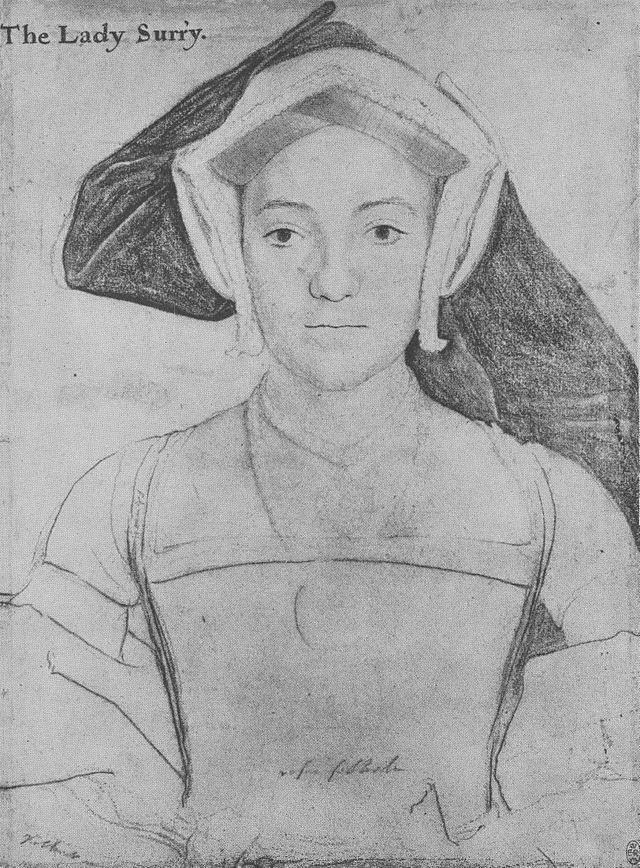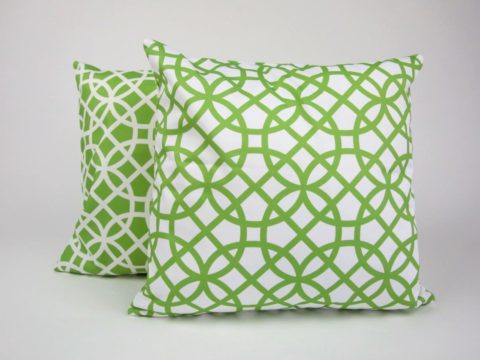Howard Family
Sola Virtus Invicta (Only Virtue Unconquered)
Chapter 6 : Matrimonial Affairs
The 3 rd Duke's niece, Anne Boleyn, was the recipient of Henry VIII's attentions in the mid-1520s, and, at some point, he decided that he wished to marry her. The ins and outs of the "King's Great Matter" are discussed elsewhere, but, suffice to say, Norfolk was initially thrilled at the thought of his niece becoming Queen, at least in part because it meant a new ally for him in his perennial battles with Cardinal Wolsey for pre-eminence in the King's confidence.
The Duchess was less pleased and took the part of Katharine of Aragon. Her views may have been influenced by the break down in the Norfolks' own marriage in 1527, when the Duke openly installed his mistress, Elizabeth (Bess) Holland, as mistress of his house at Kenninghall.
Norfolk seems to have been besotted with Bess, and later attempted a formal separation from his Duchess that she stoutly resisted, accusing him of physical violence towards her, and describing Bess in very colourful terms. The Norfolks' children seem to have supported their father, and Bess was on particularly good terms with his daughter, Lady Mary Howard.

By 1529, Norfolk was considered to be the most influential man at Court. He did not, however, have the genius required to cut the Gordian knot of Henry's marriage, and he was soon to be outflanked by Thomas Cromwell, and Thomas Cranmer. Whilst he was in favour, he secured a place for his 13 year old son, Henry, now Earl of Surrey, in the household of Henry VIII's illegitimate son, Henry Fitzroy, Duke of Richmond and the two boys became firm friends.
A further honour was in store, as Anne Boleyn persuaded the King to permit the marriage of Richmond to Norfolk's daughter, Lady Mary, without a dowry. There was talk, too, of Surrey being married to the Princess Mary, daughter of Henry VIII and Katharine of Aragon. Initially, Anne had favoured this idea, but, perhaps becoming suspicious of her uncle's motives, soon decided that it was not to be permitted.
She probably realised that the Duke, if he were father-in-law to both of the King's children, would not be so enthusiastic about supporting the degradation of Princess Mary for the benefit of his niece's children. Norfolk, appreciating the scale of Anne's influence, backed off the idea and married his son to the daughter of the Earl of Oxford.
Meanwhile, Duchess Elizabeth was continuing her support of Queen Katharine, opposing the marriage with Richmond, and even going so far as to smuggle letters to Katharine, hidden in an orange. Her partisanship led to her being banished from court for a period. Nothing daunted, she continued to snub Anne, refusing to carry her train when she was invested as Lady Marquis of Pembroke and declining to attend either Anne's coronation or the baptism of Anne's daughter, Elizabeth, in 1533.
In 1532, Surrey accompanied the Duke of Richmond to France where the boys (aged 15 and 13 respectively) spent a year with the sons of Francis I. During this period Surrey is likely to have picked up the Renaissance influences of the French Court which were to inform his later poetry.
He returned home in September 1533, accompanied by his father, who had been sent to France to persuade Francis I to put pressure on the Pope to recognise the marriage of Henry and Anne Boleyn, which had taken place in January of that year.
Norfolk failed in this task. Francis, having promised to support Henry, lost interest in the idea when bribed with a marriage for his son to the Pope's niece.
On the return of the two boys, the marriage between the Duke of Richmond and the Duke's daughter, Lady Mary Howard, took place. They were both about fourteen, over the age of consent, but considered too young to co-habit. Mary, now styled Duchess of Richmond, took up a place in the new Queen Anne's household.

The couple had still not lived together by the time of the Duke's death in the summer of 1536, and Mary was returned, in some distress for money, to her father. Henry refused to pay her jointure, as the marriage had not been consummated.
Surrey, meanwhile, had married Lady Frances de Vere, daughter of the Earl of Oxford, by whom he was to have several children.
